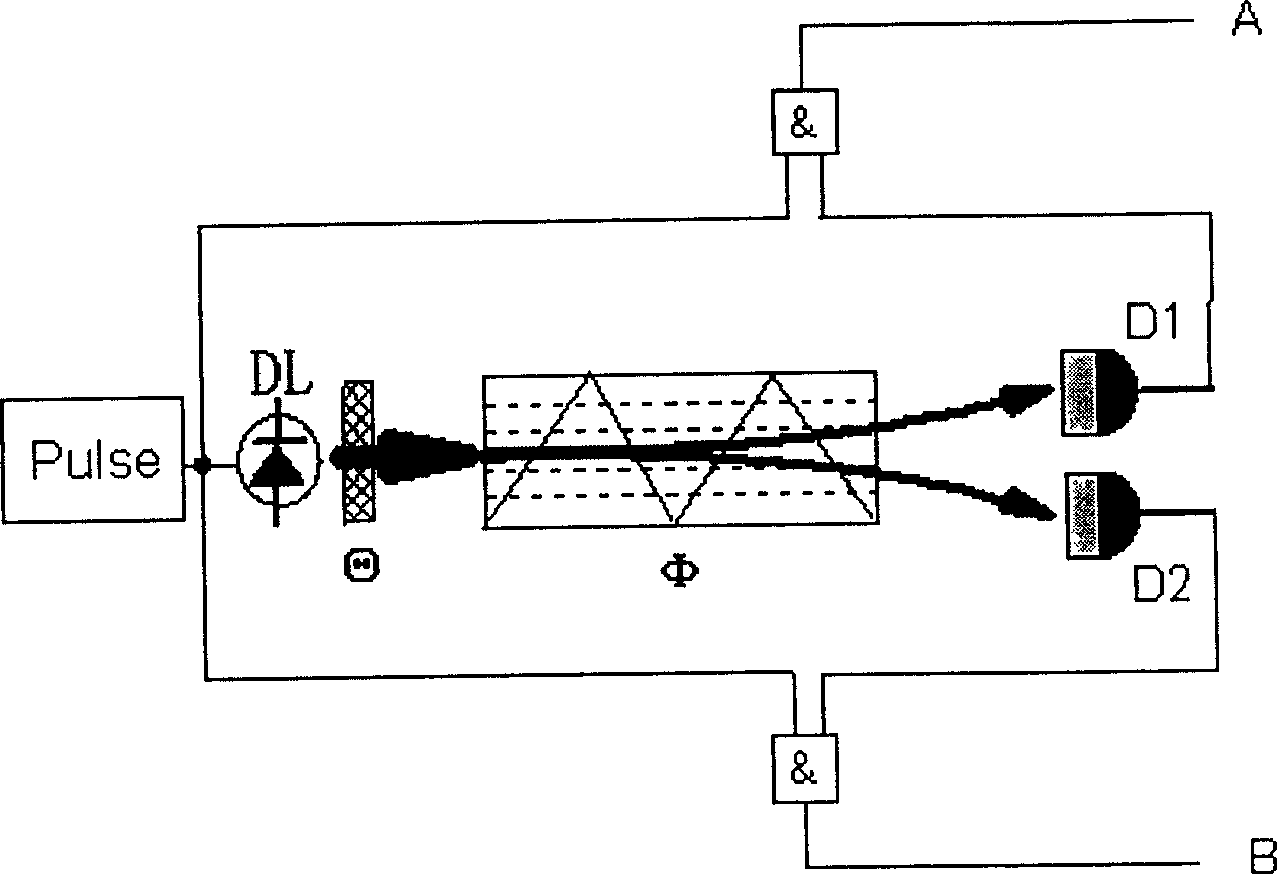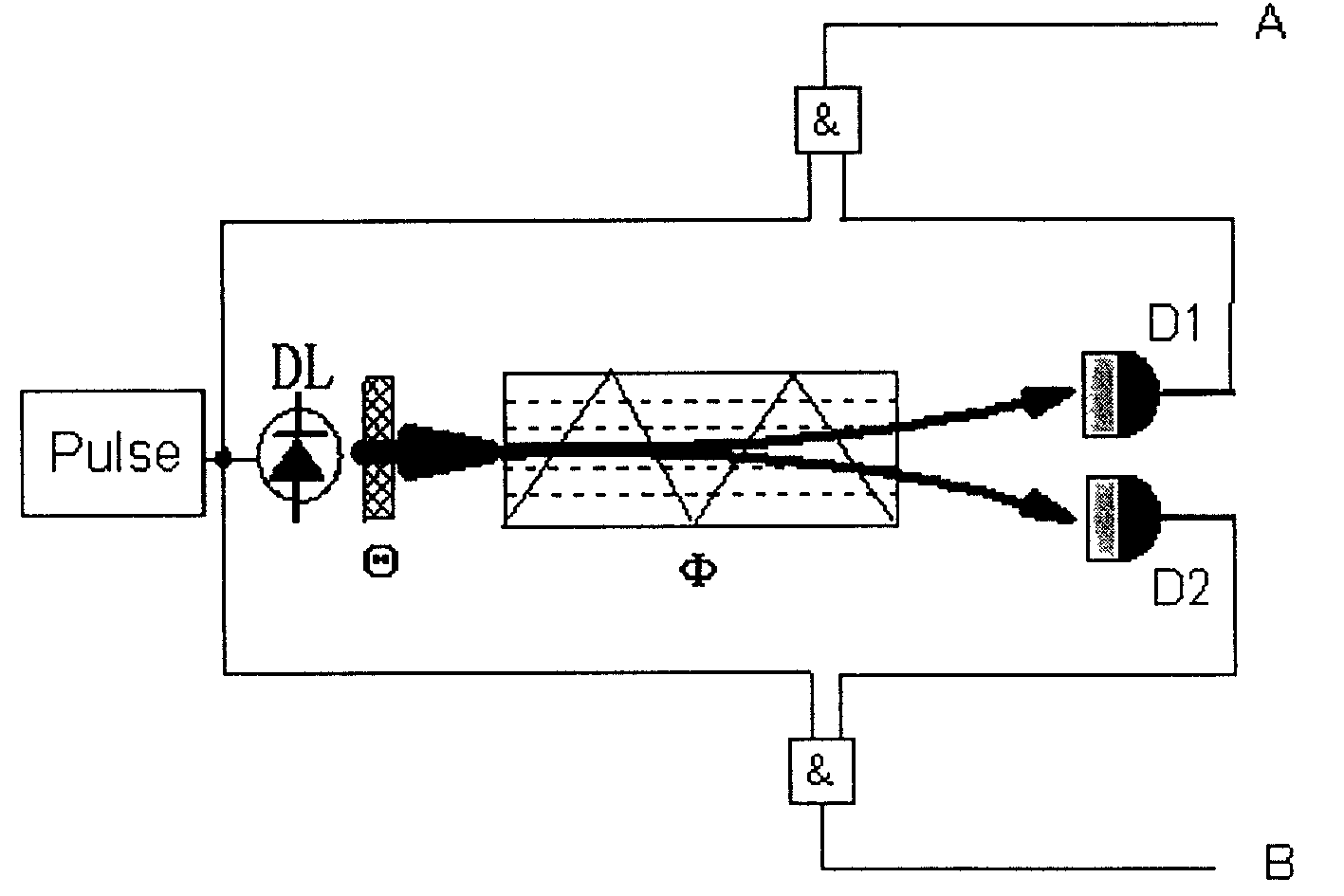Quantum random number generator and method for uniformly and alternatively changing standard base
A quantum random number and generator technology, applied in the field of information security products, can solve problems such as difficulty in ensuring random sequence balance, difficulty in miniaturization of optical fibers, and correlation between front and rear signals
- Summary
- Abstract
- Description
- Claims
- Application Information
AI Technical Summary
Problems solved by technology
Method used
Image
Examples
Embodiment Construction
[0037] The principle of our solution is as follows figure 1 As shown, a red pulse weak light (wavelength about 650nm) is generated by a diode laser (DL), and the pulse frequency is 10MHz. Because the distribution of Poisson photon numbers with a mean of 0.1 is a good approximation to the ideal δ distribution of single photons, we use an attenuator (Θ) to attenuate the pulsed light emitted by the LED to approximately 0.1 photons per pulse (or 10 pulses per photon). The attenuator (Θ) is composed of two polarizers, and the attenuation rate can be adjusted by adjusting the angle between their transmission directions (if the angle is 90 degrees, then no photons are transmitted). In this way, the photons emitted from the attenuator are linearly polarized. Without loss of generality, we assume that the angle between the polarization direction and the horizontal direction is θ, then the state of the photon can be expressed as:
[0038] |ψ>=cosθ|H>+sinθ|V>,
[0039] where |H> and |...
PUM
| Property | Measurement | Unit |
|---|---|---|
| Center wavelength | aaaaa | aaaaa |
Abstract
Description
Claims
Application Information
 Login to View More
Login to View More - R&D
- Intellectual Property
- Life Sciences
- Materials
- Tech Scout
- Unparalleled Data Quality
- Higher Quality Content
- 60% Fewer Hallucinations
Browse by: Latest US Patents, China's latest patents, Technical Efficacy Thesaurus, Application Domain, Technology Topic, Popular Technical Reports.
© 2025 PatSnap. All rights reserved.Legal|Privacy policy|Modern Slavery Act Transparency Statement|Sitemap|About US| Contact US: help@patsnap.com



